How to Start Your Stamp Collection
An introduction to the wide world of stamp collecting
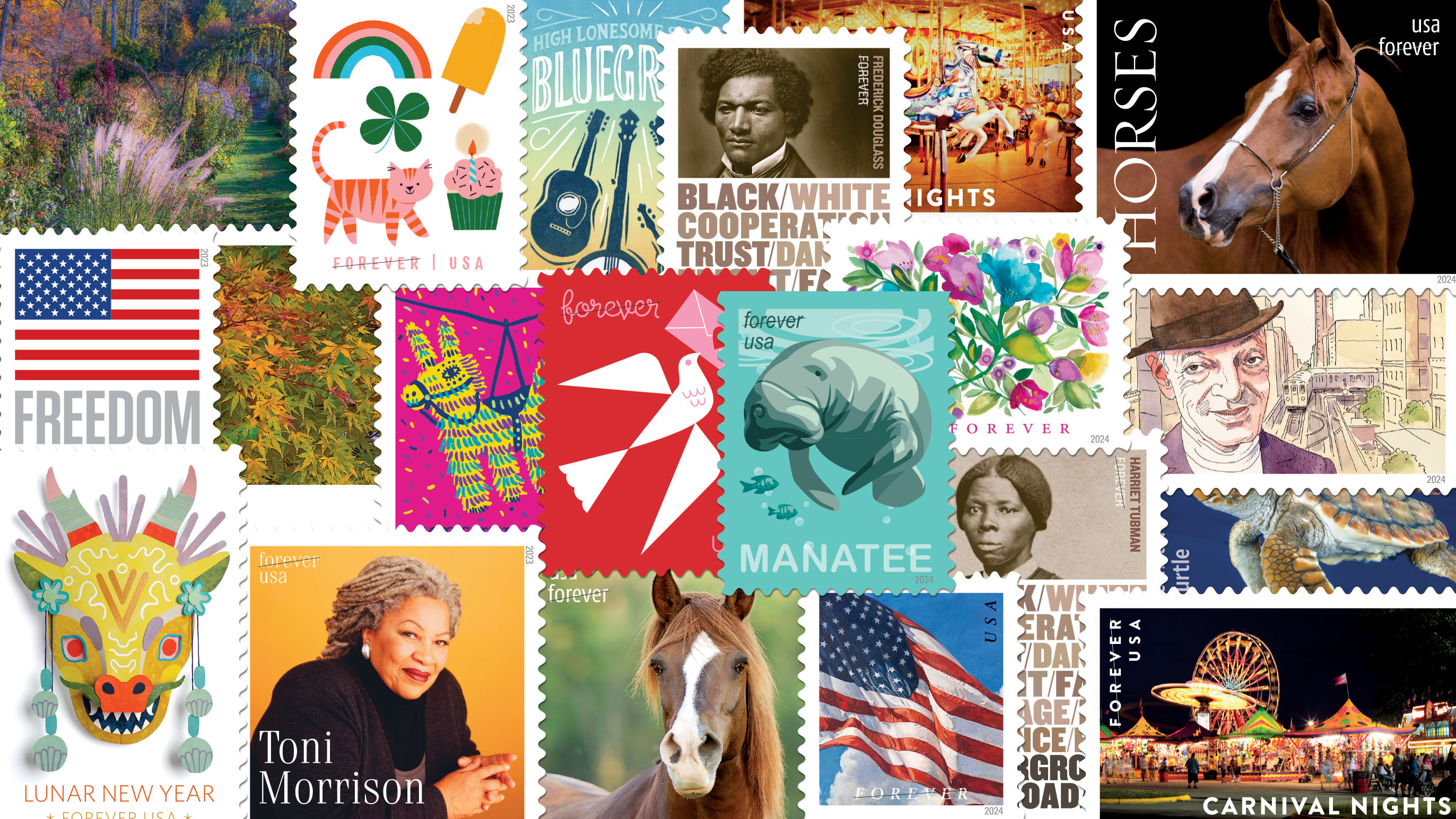
Why collect stamps?
Since the Penny Black, the first pre-paid postage stamp, was issued in 1840, people have found delight and wonder in stamp collecting. As miniature windows into the world, stamps introduce collectors to art, culture, history, science, geography, and so much more.
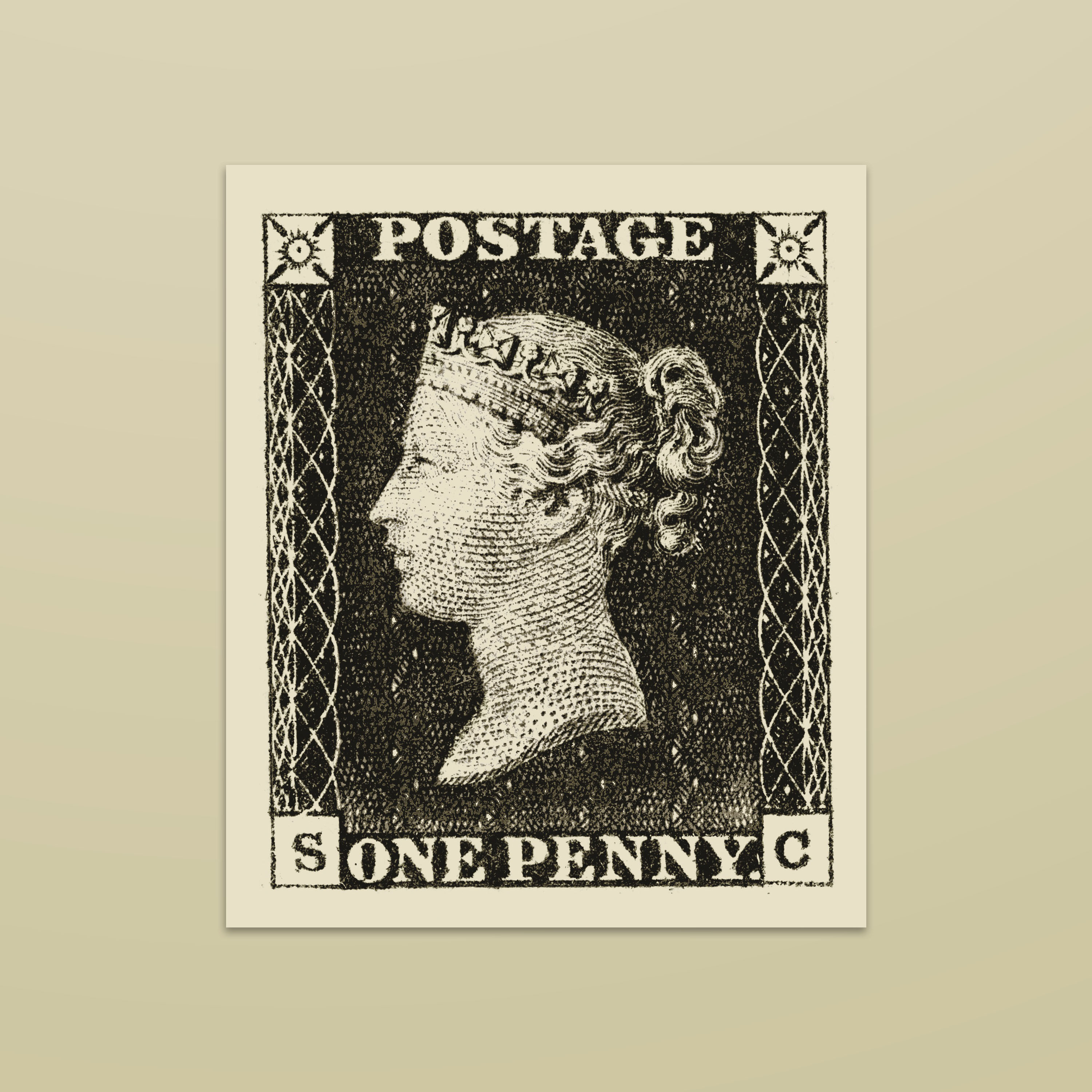
Stamps from the U.S. Postal Service® are a record of American life, showcasing the people, places, events, and activities that shape our shared national identity. Whether you love superheroes or space exploration, music legends or landscapes, cats or the Civil War, there’s a stamp that captures your unique interest.


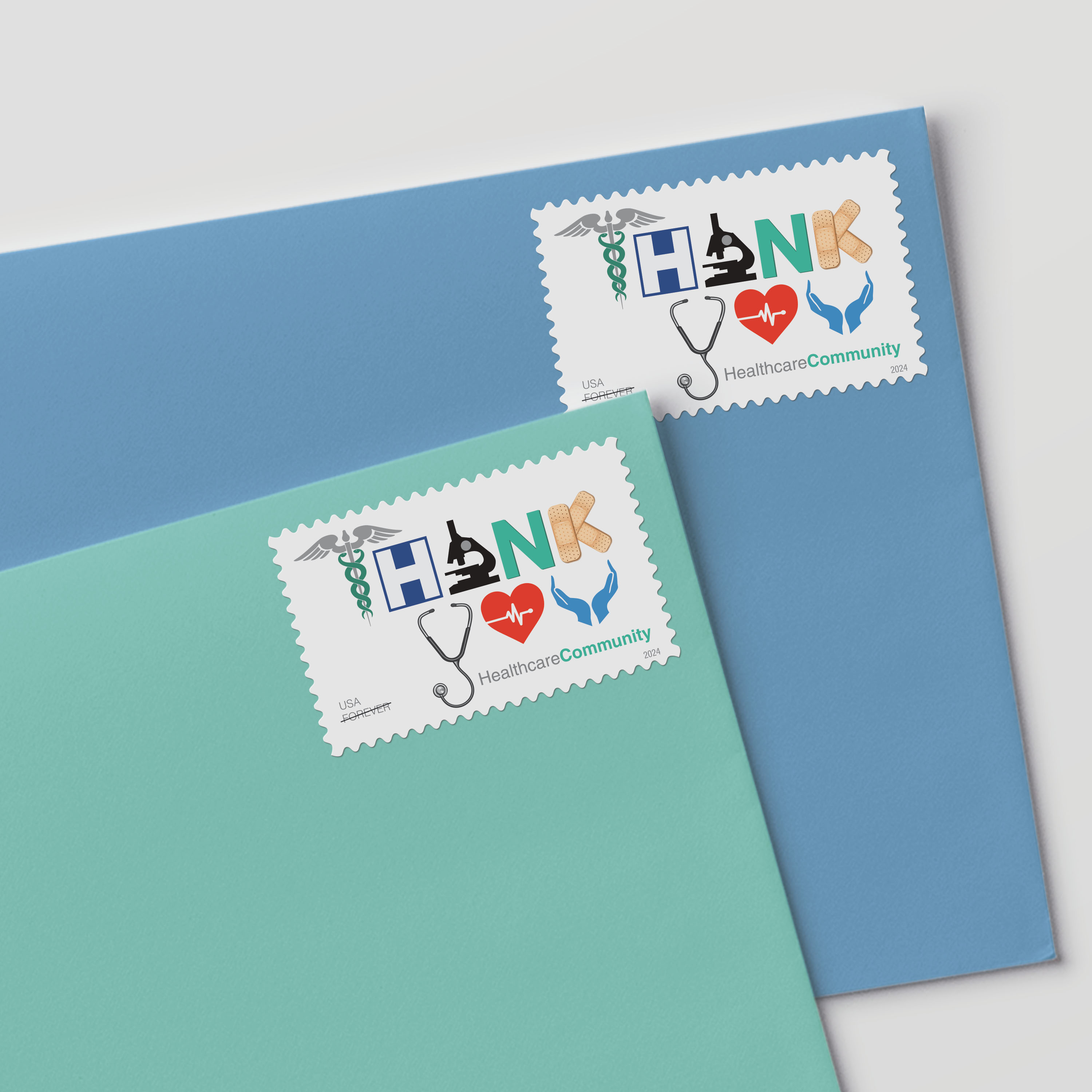

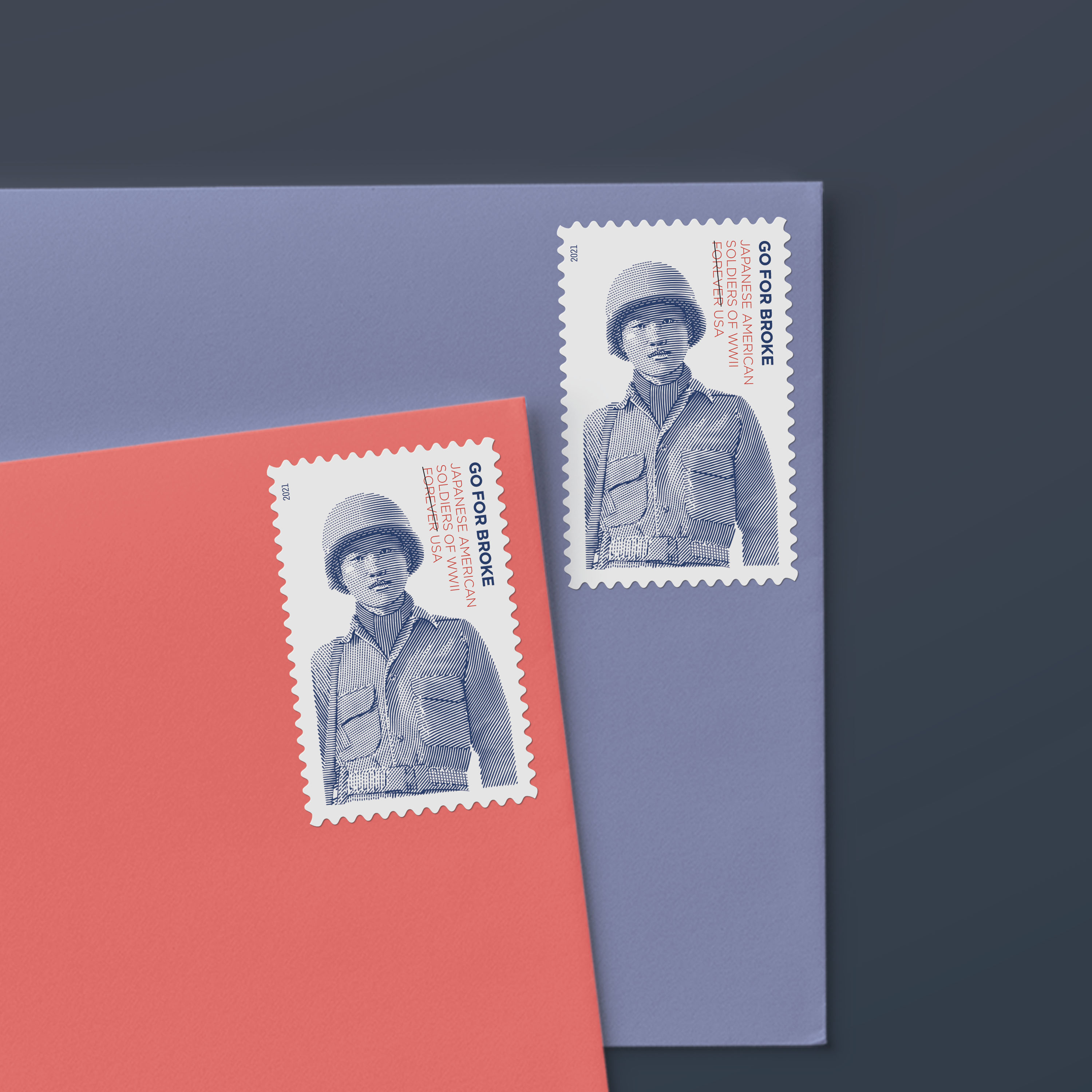
Collecting and studying stamps, also known as philately, can be a lifetime hobby: Whether you’re 8 or 88, stamp collecting is fun and educational, and you can begin without making a big investment of money or time.
How do I begin?
Getting started as a stamp collector couldn’t be easier! Start your collection by saving stamps from letters, packages, and postcards. Also visit your local Post Office™ facility or search online to purchase older stamps.
To focus your collecting, you might consider choosing a favorite subject as the theme of your collection. Or, you might select a significant time in history or a cause you’re passionate about. Then, start searching for stamps that feature your chosen topic and work on building your collection.

You could also collect stamps by series: For example, you could collect all of the stamps in the Black Heritage® series or in the Music Icons® series.
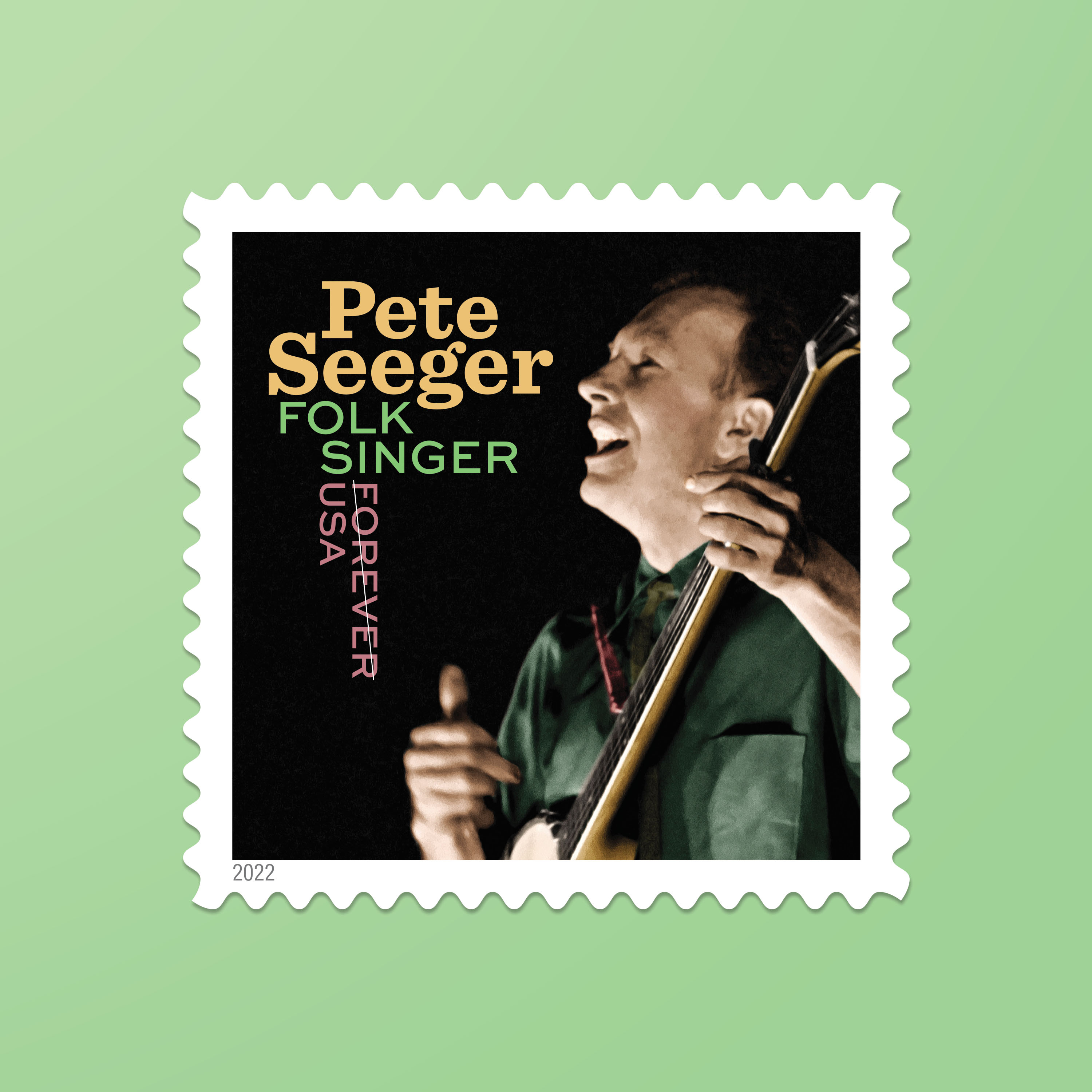
What kinds of stamps are there?
Mail-use stamps are the most common. Usually less than an inch square, they’re printed in large quantities and often more than once.

Commemorative stamps honor people, events, and subjects of importance to American life and culture. They are printed in smaller quantities as part of an annual program and usually only once. Larger than mail-use stamps, many commemoratives are printed in “semi-jumbo” size, the largest standard size in use.
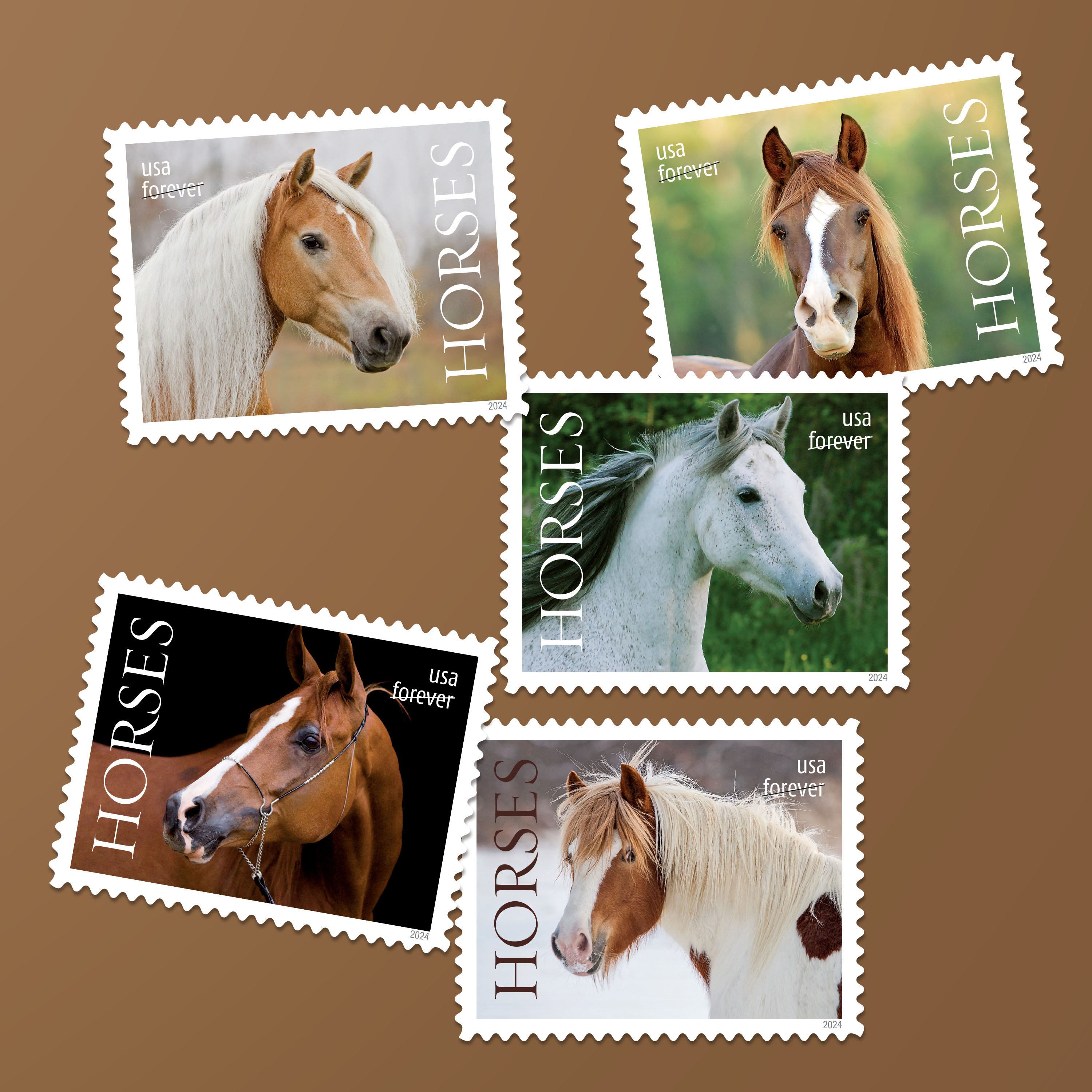

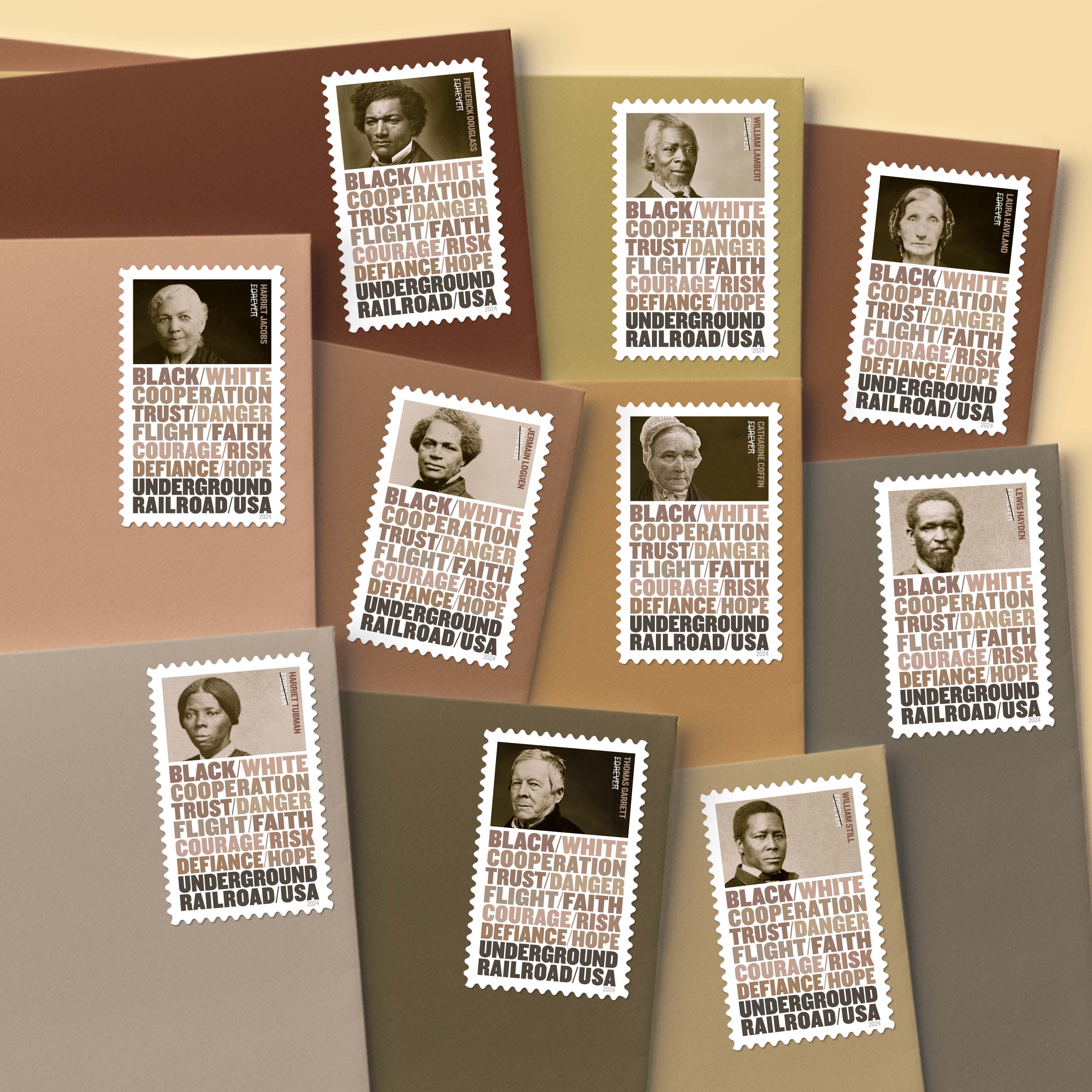
Special stamps — such as stamps for holiday celebrations and the Love series stamps — are larger and typically on sale for a limited time.
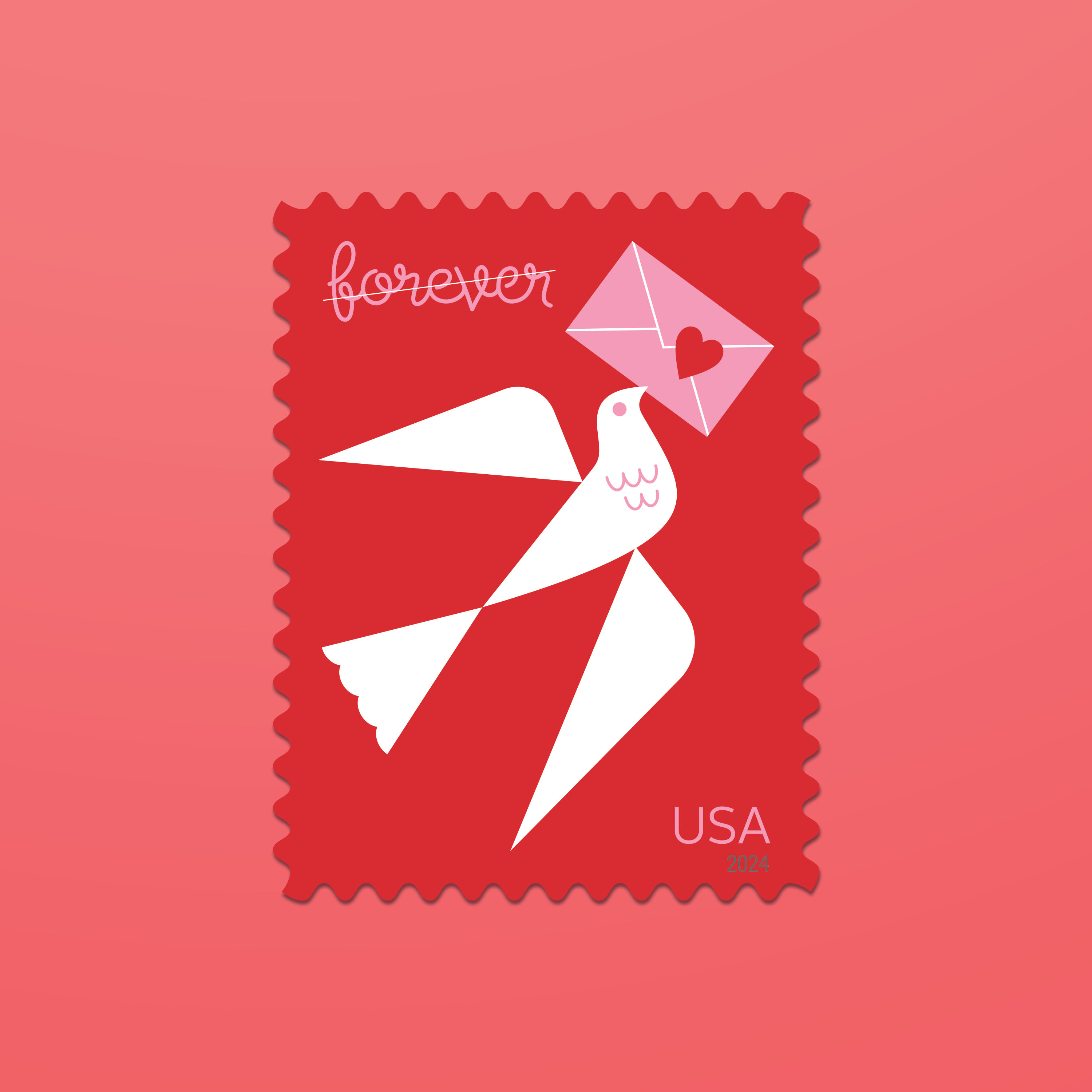
Semipostal stamps are a type of special stamp sold at a price above the First-Class™ rate, with the overage going to support a particular cause, such as breast cancer research.
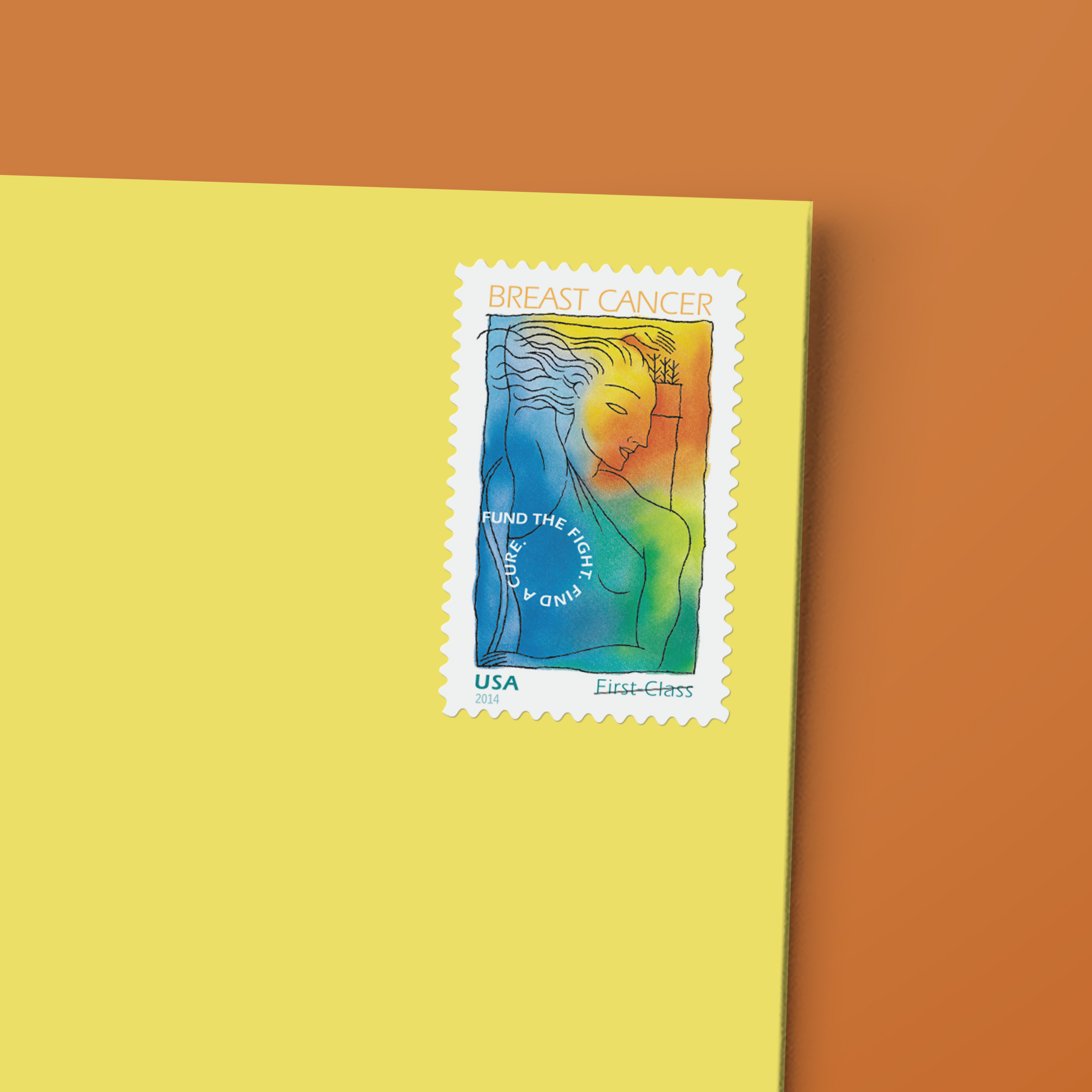



Stamps can be “denominated” with a specific numeric rate (e.g., two cents) or “nondenominated.” The latter will always be valid for the current applicable rate. First-class, one-ounce, “nondenominated” stamps are commonly known as Forever® stamps. The majority of stamps issued in recent years fall into this category.
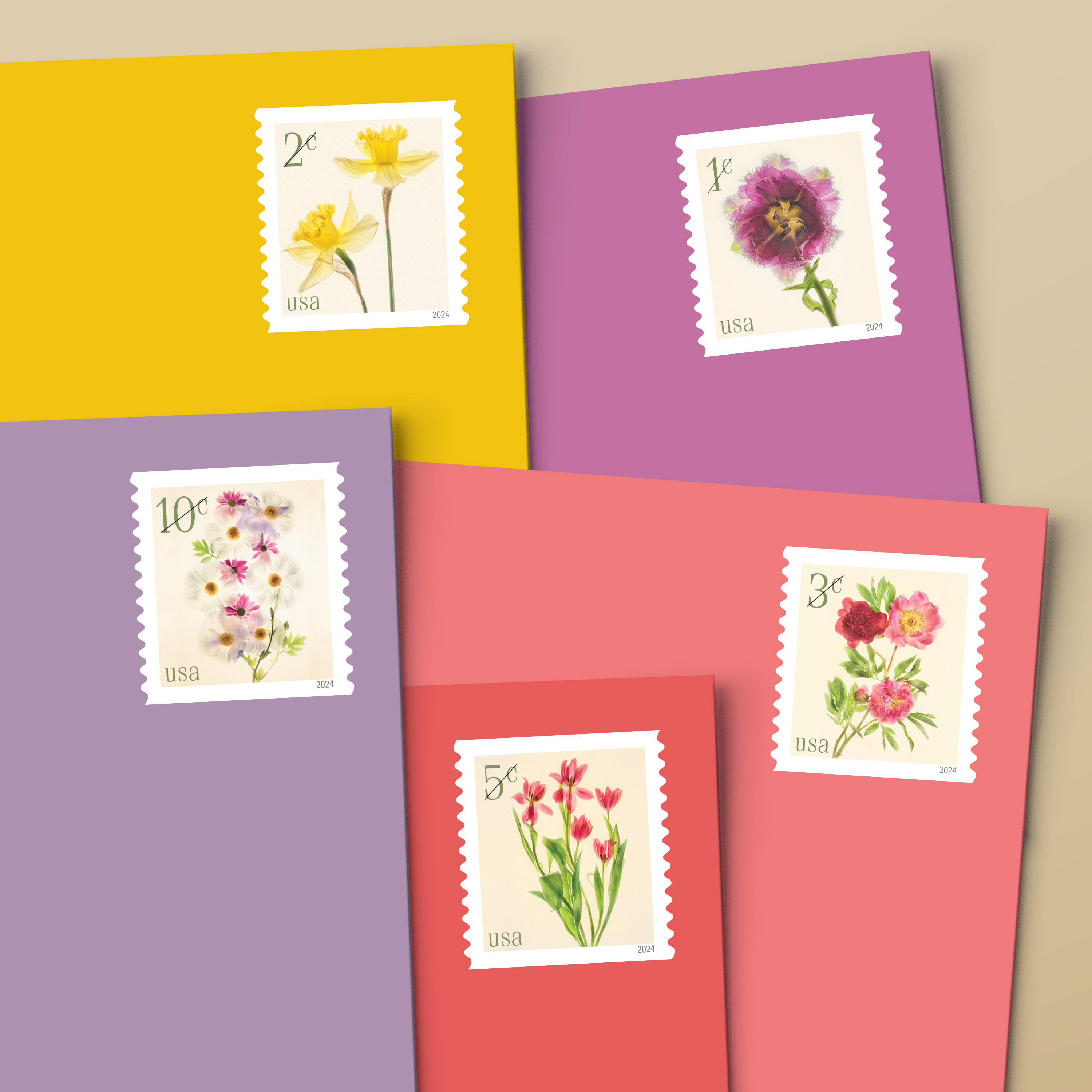
Some stamps, especially older issuances, have water-activated adhesive (“lick-and-stick”) and may require careful storage to avoid having the adhesive adhere to an album page or to other stamps. Today’s stamps are typically issued as self-adhesive or pressure-sensitive (“peel-and-stick”).
What sizes, shapes, and formats do stamps come in?
Rectangular: Stamps in this shape are the most common. They range in size from 0.870" wide by 0.98" tall to 1.255" wide by 1.59" tall. Depending on the actual dimensions, the specific rectangular sizes range from definitive to jumbo.
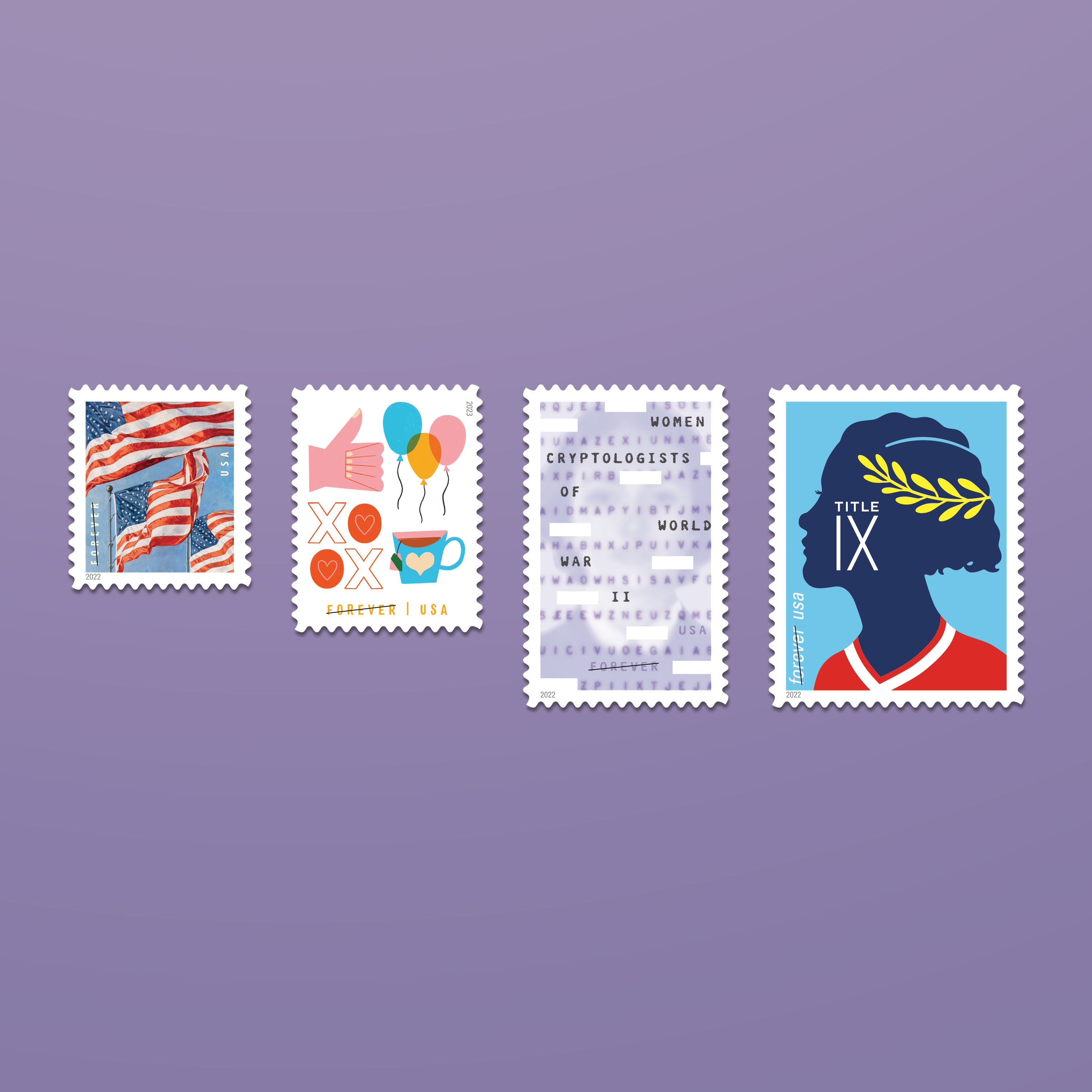
Square: These stamps are used for specific designs and have included stamps in the Music Icons® series. They are also used for stamps with unique rates, such as those designed to be sent on square, nonmachinable envelopes.
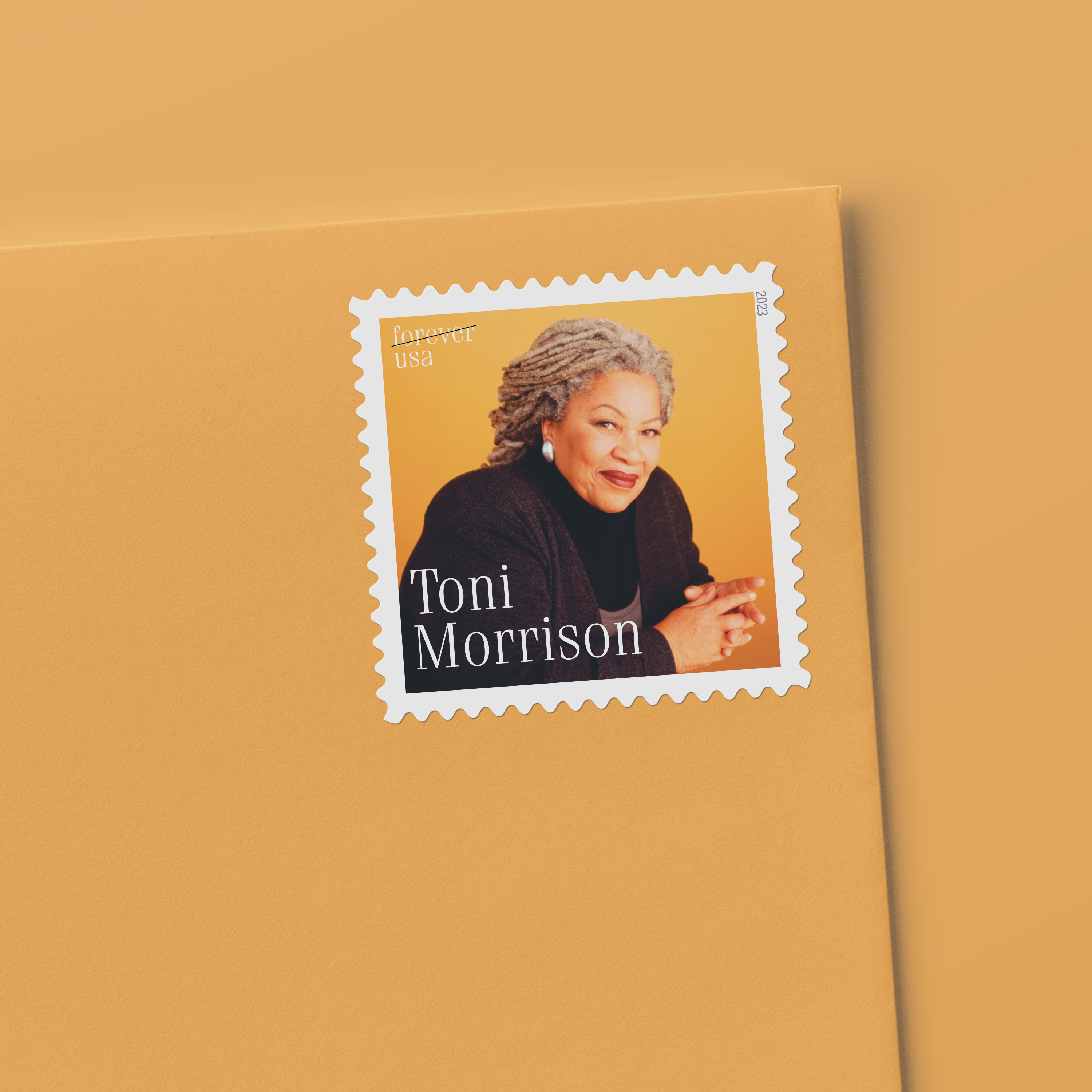
Round: The newest stamp shape has been used in the Pinback Buttons stamps and for international rate stamps to showcase unique designs.
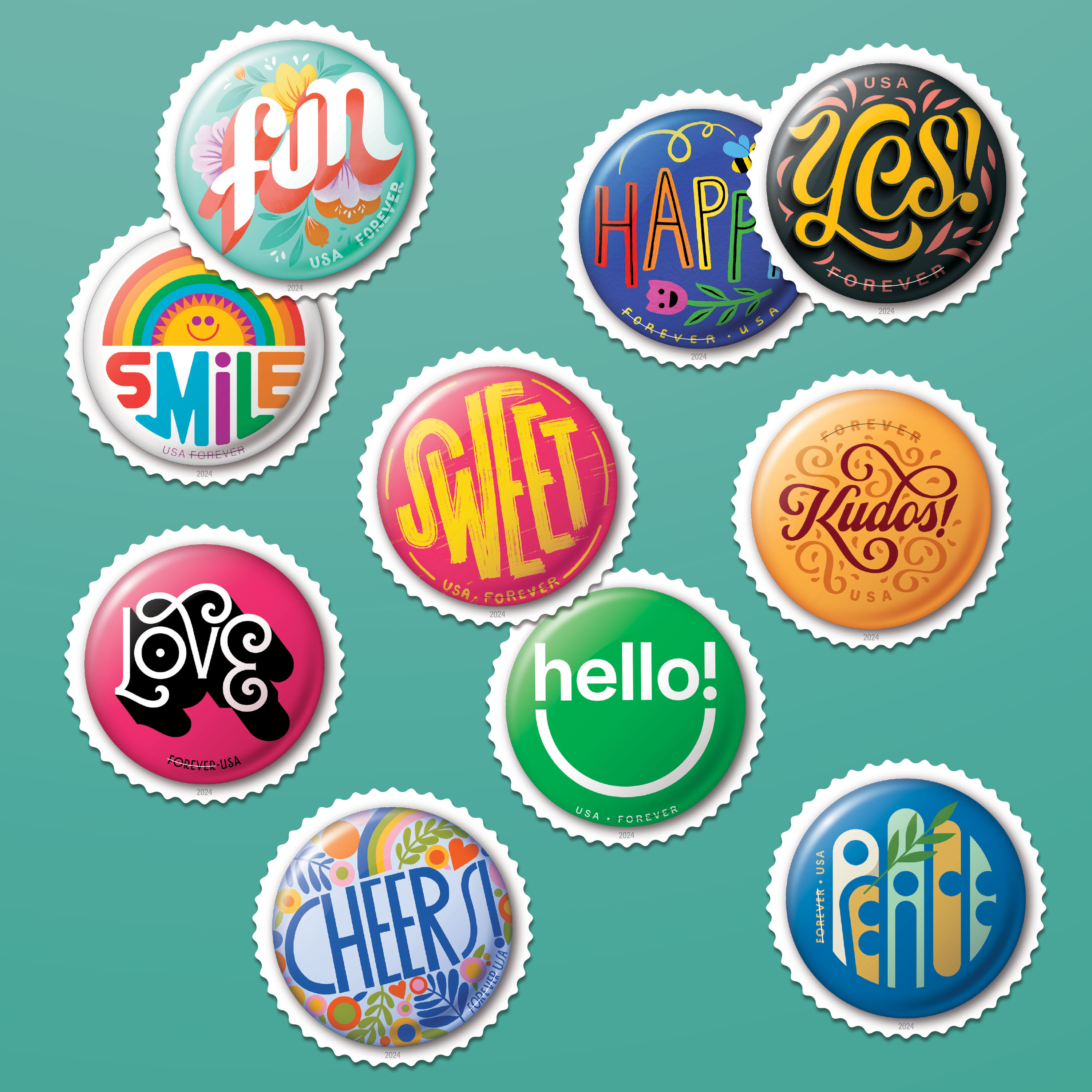
Some stamps are also produced with special features, such as scratch-and-sniff (Frozen Treats), heat-sensitive ink (Total Eclipse of the Sun), and lenticular printing, which creates a holographic effect (The Art of Magic Souvenir Sheet).
Stamps are sold in a variety of different configurations. Panes are “sheets” of stamps cut from the original press sheet, coils are strips of stamps (one stamp wide) sold in rolls, and booklets are the most easily portable option, commonly employed for mail-use stamps.
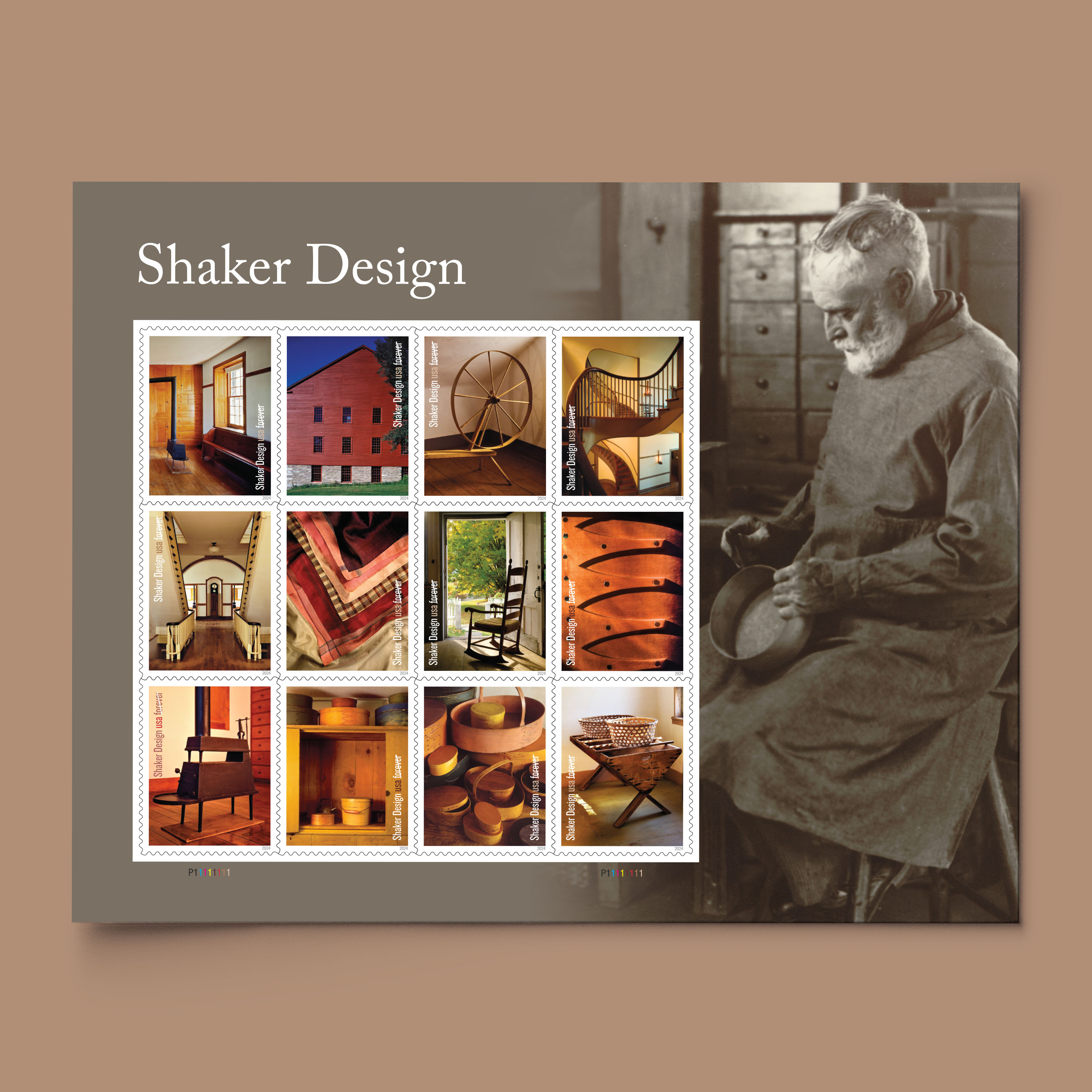

How should I store my stamps?
Now that you’ve done the hard work of finding the stamps you want to collect, you want to keep them safe so they don’t get damaged or lost. Preserve your stamps with a stamp album or on loose-leaf paper in a binder. Affix stamps with stamp hinges, which are glassine strips with gum on one side, or stamp mounts, which are clear plastic sleeves that offer protection for unused stamps.
What else could I need?
You don’t need much to get started, but here are a few other tools that many stamp collectors find useful:
- Glassine envelopes: Thin, transparent, moisture-proof envelopes that protect stamps from air and grease.
- Perforation gauge: A tool that measures the number of perforations along the edges of your stamps.
- Magnifying glass: Used to inspect stamps for tiny details and condition.
- Stamp catalog: A handy reference book with stamp values and illustrations.
- Stamp tongs: A tool used to pick up and move your delicate stamps.
What other terms might I need to know?
- Cachet: A stamp-related design on an envelope.
- Cancellation: A mark placed on a stamp by a postal authority to show that the stamp has been used.
- First Day Cover: Envelopes bearing unused stamps postmarked on the first day of issuance, either in black ink or with a colorful digital design inspired by the artwork.
- Packet: A presorted group of different stamps, a common and economical way to begin a stamp collection.
- Perforations: Lines of small holes or cuts between rows of stamps that make them easy to separate.
- Postmark: A mark put on envelopes or other mailing pieces showing the date and location of mailing.
- Selvage: The paper around panes of stamps, sometimes called the margin.
What else can I collect?
There are plenty of exciting, educational philatelic products to help you grow your new hobby.
First Day Covers are envelopes bearing stamps postmarked on the first day of sale, either in black ink or with a colorful digital design inspired by the artwork.
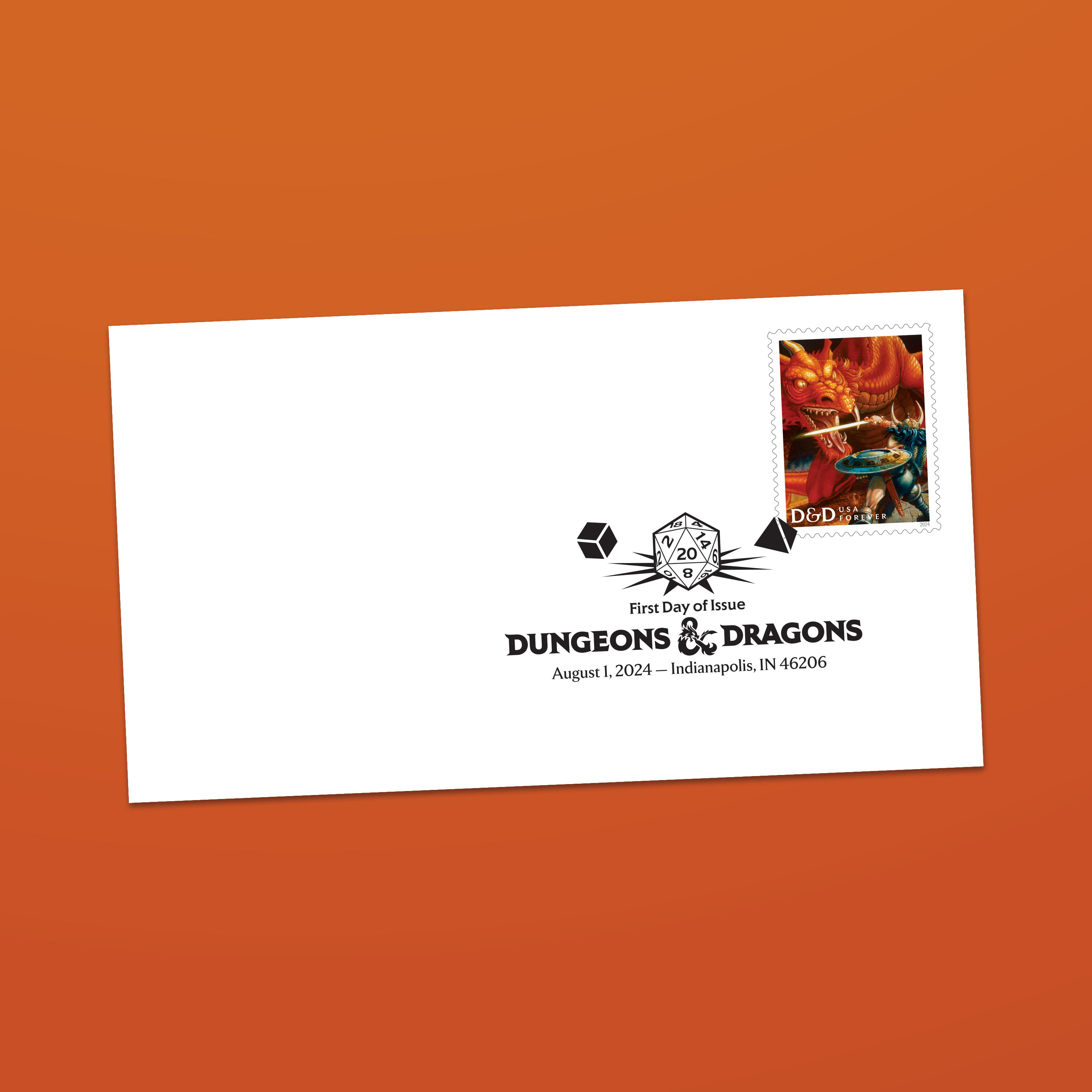


First Day of Issue Ceremony Programs contain information about a stamp’s dedication ceremony, including a list of participants and background on the stamp subject. The actual stamp is attached and cancelled on the program’s envelope.
Commemorative Panels are printed on a single sheet of cardstock and feature a narrative about the stamp subject and design. They come with the relevant stamps affixed.

Collectible Folios open to reveal creative extensions of the stamp artwork, along with in-depth explorations of the stamp subject and design. They include the relevant stamps and mounts for preserving them.
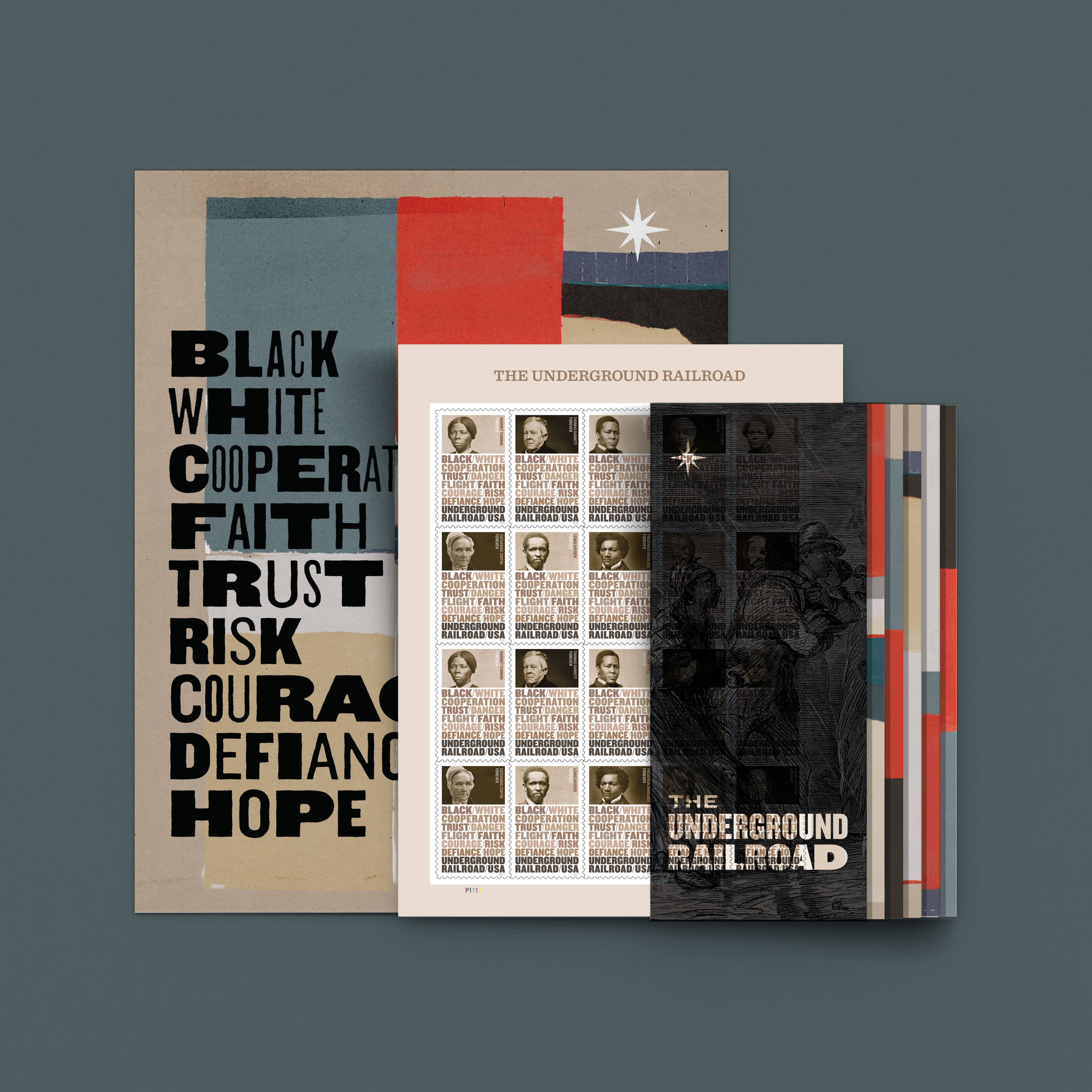
Stamp Yearbooks provide imagery and information related to every stamp released in a given year, along with the stamps themselves and mounts.
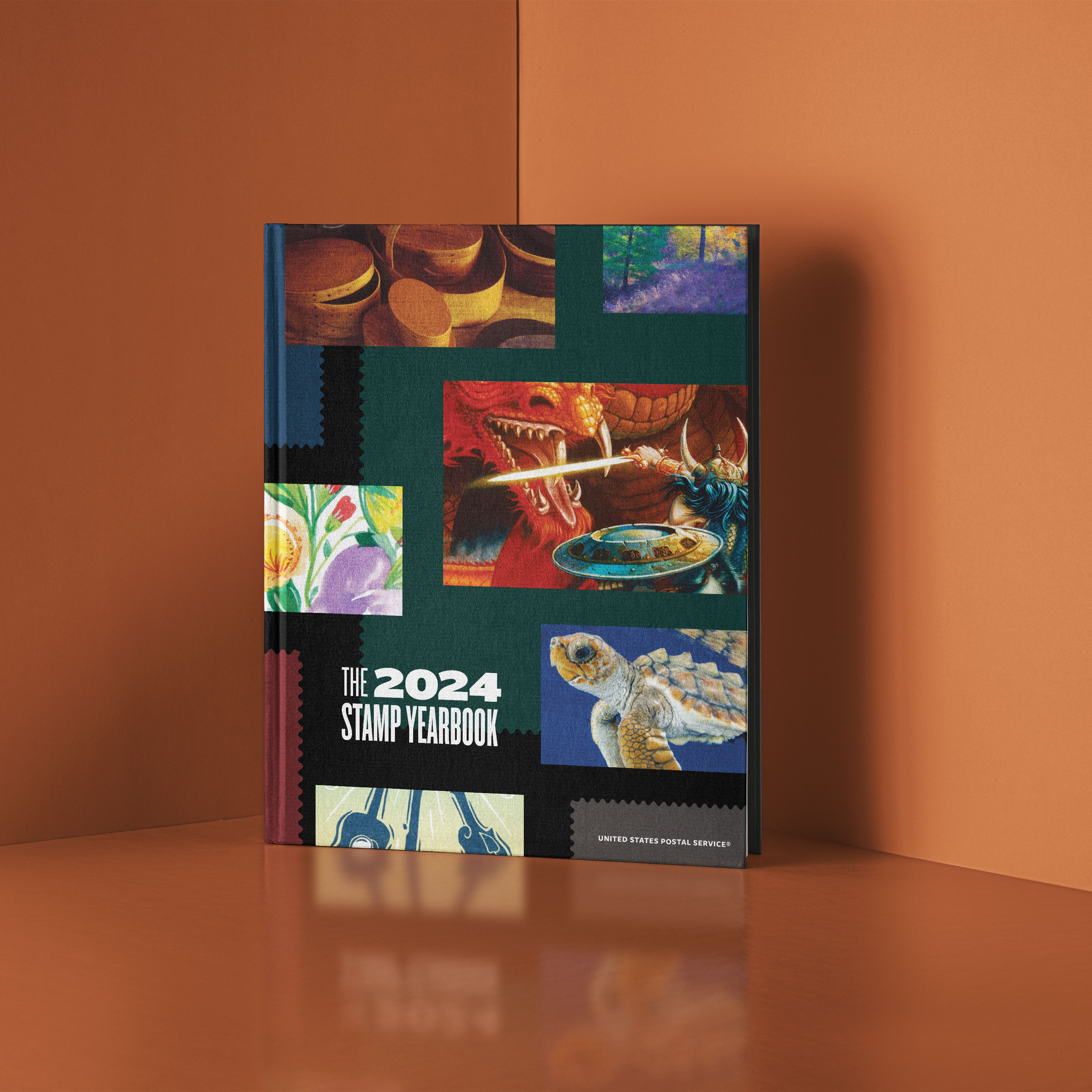

These and a variety of other philatelic products are available online at the Postal Store®. You can also choose from various subscription programs to receive specific stamps and stamp products year round.
Where can I learn more?
The world of stamp collecting is rich and diverse. Numerous stamp clubs exist locally, nationally, and online. Stamp shows held across the country and around the world offer stamp enthusiasts other venues to make connections and deepen their collecting knowledge. Many philatelists also subscribe to magazines that target their collecting interests.

Here are a few resources to help you get started.
- American Philatelic Society: America’s national stamp society, APS offers a variety of membership benefits, including seminars, online courses, mentor programs, and access to special publications.
- American Stamp Dealers Association: The website of the ASDA, an international association of stamp dealers, provides an extensive database searchable by dealer name, location, and specialty.
- Smithsonian National Postal Museum: Located in Washington, D.C., the museum houses more than 6 million postal-related items for exhibition and study purposes.
You can also visit the Postal Store® to explore available stamps and philatelic products, or sign up for a free subscription to USA Philatelic, a quarterly catalog that’s the only official print source for information about new USPS® philatelic products and stamp issuances.